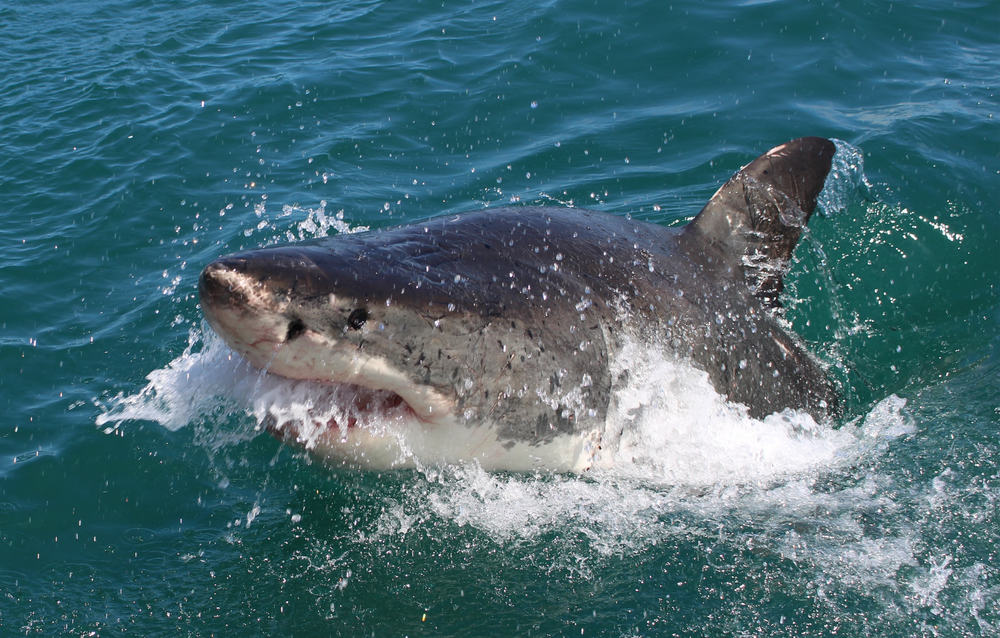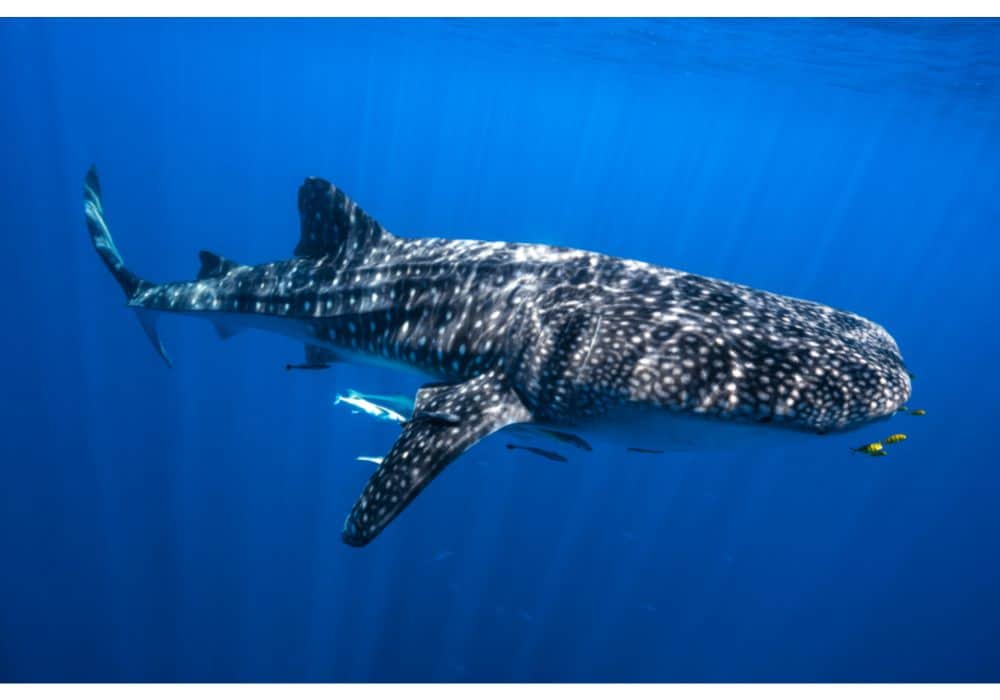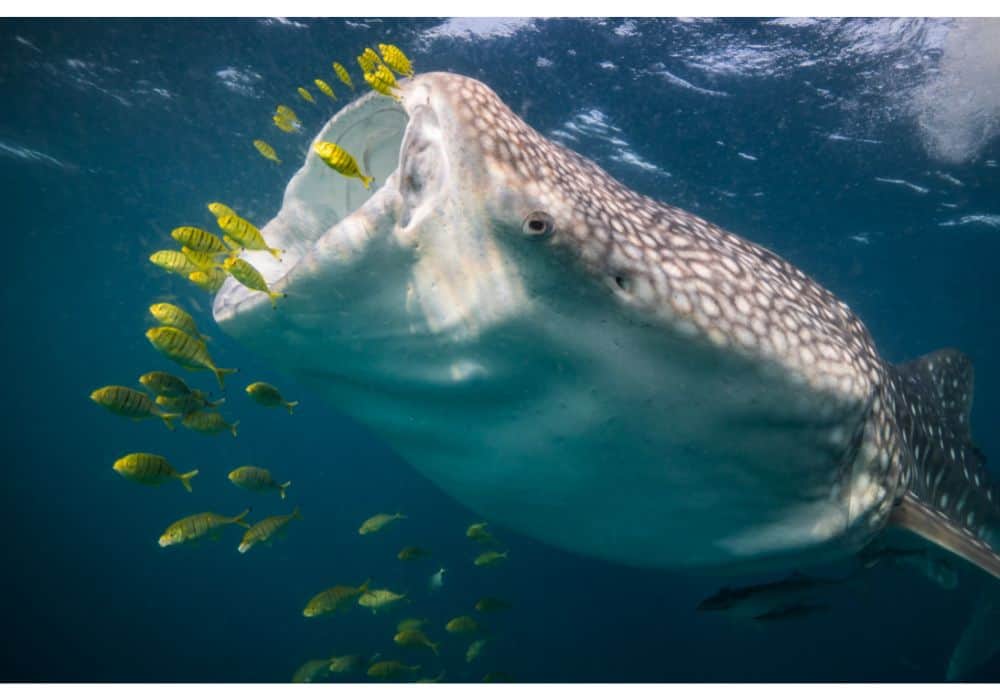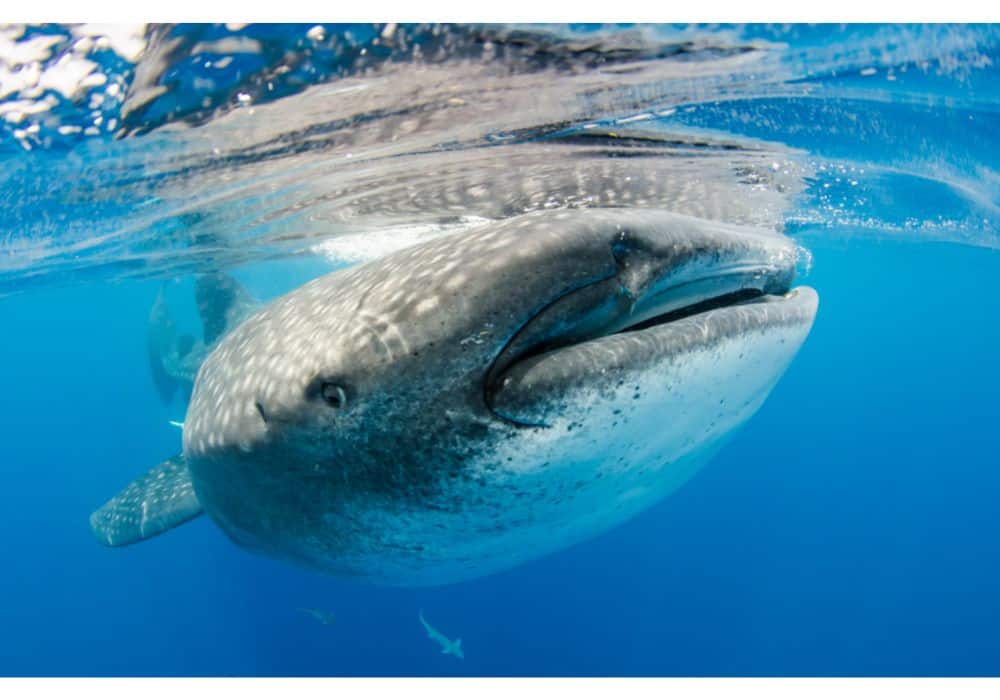Can you imagine being at sea and encountering a fish as big as a school bus? Yeah, that can be a pretty frightening experience. However, this is what can happen if you would have the chance to cross paths with a whale shark.
Do not let its size and name deceive you; whale sharks are known as “the gentle giants.” The whale shark is one of the most social and gentle marine animals in the entire ocean; its name is only due to its large size, which is why some may confuse and believe that it is a mammal, but in reality, it is a fish; a quite remarkable fish worth knowing.
The Physical Characteristics of the Whale Sharks
The whale shark is, by far, the largest fish in the whole world. Its exact size and weight vary among research. Some studies point out that whale sharks are able to achieve a length of about 18 meters.
Nevertheless, the specimens that have been studied averaged 6 to 12 meters and weighed 15 tons. There was one report of a larger specimen in the Gulf of Siam, reported to size up, on average, approximately 18 meters, but this number is highly disputed.
However, its size is not the only thing that impresses. Its beautiful skin with white spots and lines is incredible, it has a thickness of 10 centimeters, and each whale shark has a unique and unrepeatable pattern as if it were a human footprint.
In the same manner, the whale shark has an enormous broad flat head, whose mouth can measure up to 1,5 meters wide and extends throughout the width of the head. Unlike the other sharks, this mouth is almost on the front part of the head and is full of small, sharp but tiny teeth, similar to scales.
Their eyes are small, similar to a golf ball’s size, and are located at the same level as the jaw’s angle. The whale sharks also possess five large vertical brachial indentations in front of and above the base of the pectoral fin.
They also possess two dorsal fins located well back on their body, and on each side of the upper body, they have distinctive horizontally oriented parallel ridges.
The Nature of the Whale Sharks
The whale shark is usually a lone animal, but there are occasions when you can see them in shoals of about 100 individuals. It is acknowledged that this animal has migratory tendencies. However, not as much information is available on their migration habits and patterns.
It is believed that when they join in shoals, they travel kilometers and kilometers in order to find places to feed. The whale shark crosses the ocean offshore but also tends to come close to the coast. When they sleep and migrate, they tend to go as deep as 980 meters while they are at the surface during the day and when they feed.
Whale sharks are slow swimmers, having a standard swimming speed of about 3 miles per hour. Therefore, its swimming pattern is different from that of other sharks, who use the caudal fin as a propulsion method. On the other hand, the whale shark uses the entire posterior two-thirds of its body length.
The Distribution, Habitat, and Life Span of a Whale Shark
The whale shark is a lover of tropical and warm temperate waters found between latitudes of 30°N and 35°S. You can find it in oceanic and coastal waters, but not in the Mediterranean Sea, and the species as such has been reported from 124 countries, including the Senegalese coasts, Sri Lanka, South Africa, China, Thailand, Indonesia, Philippines, Australia, Mexico, and Hawaii.
These open waters pelagic fish has been seen frequently on less deep coasts, whether it’s bays, lagoons, or coral reefs. They like to be in warm waters that are interspersed with some cold suggestions and are rich in food sources. As for their life expectancy, there is no exact data for their maximum age, but it is believed that whale sharks live between 60 to 150 years.
What Do Whale Sharks Eat?
The whale shark cannot bite or chew; that is why he feeds through a method denominated as filtration; due to this diet and despite its large size, the whale does not hunt big prey. Why? For what reason?
These filter feeders have a giant mouth but a small throat that limits the size of the prey that they can swallow. Its feeding technique is quite similar to the ones of the great baleen whales. The whale shark uses its gills to process more than 6,000 liters of water per hour.
The whale shark’s gills open wide and engulf both water and prey. They then close their mouths and filter the water through the mucus-coated strainers, which contain the food ready for ingestion; this is a method of passive feeding, where they simply have to open their mouth while swimming.
Having learned this, you will not be surprised to learn that the staple diet of whale sharks is primarily saplings and zooplankton. However, plankton is their favorite food, and that is why whale sharks have been seen migrating from far distances to the Ningaloo reef to eat vast amounts of plankton when it blooms.
To this, we must add the ingestion of small crustaceans like crab larvae, squids, krill, jellyfishes, fish eggs, small tuna, and other small fishes. Among those later mentioned, usually, you can find anchovies, sardines, mackerel, and similar species.
What Do Whale Shark Calves Eat?
The diet of bay whale sharks is probably based on the ingestion of small crustaceans, especially krill.
How Much Do Whale Sharks Eat?
Taking into consideration their size, the whale sharks need a large amount of food in order to survive. It is estimated that a young whale shark can eat 21 kg of plankton per day.
It should be noted, however, that their large size allows whale sharks to store energy more efficiently and travel long distances more easily than other fish. In addition, this large size is what allows them to endure long periods of migration, especially when they do not find food sources.
Fun Facts About Whale Sharks
- They eat using an extremely efficient filtration technique.
- Whale sharks have been seen “coughing,” presumably to remove dirt particles on the filter pad with which it feeds.
- Whale sharks have been seen feeding by ramming, probing schools of fish, and then giving the final blow by ramming them with their enormous mouths.
- They are filter-feeding from the surface ram. That is, it moves forward or in circles but keeps its upper jaw above the water surface.
- They feed by stationary suction feeding, and this occurs when the whale shark remains stationary and sections its prey.
- Apparently, whale sharks do not use their teeth; the reason why the sharks don’t use them is still unknown.
In Conclusion
While being the world’s largest fish, it is impossible to forget. But in general terms, not only because of its size, the whale shark is an animal worthy of admiration and protection. While in danger of extinction, our responsibility is to collaborate with its preservation. Either by putting a stop to whale shark hunting or by making efforts to support the conservation of its habitat.
In addition, you can support and contribute to the many different organizations in all parts of the world that are in charge of realizing studies and pertinent work in order to protect these animals in danger of extinction.
F.A.Q
Can a Whale Shark Eat a Human Being?
No, it was previously mentioned that whale sharks have small throats and do not use their teeth to crush their food. Therefore, they cannot eat humans, as the size of us would be impossible for the whale shark to process.
Not to mention whale sharks are friendly and curious animals that let divers get near and examine them without showing any signs of threat or aggressiveness.
What Is the Largest Thing a Whale Shark Can Eat?
The most prominent things that whale sharks are estimated to eat are jellyfish, crabs, and squid. But even when this type of animal reaches an immense size, whale sharks do not eat them.
Are Whale Sharks in Danger of Extinction in 2022?
The whale shark has been in danger of extinction for many years. There are several reasons for this, but some of the main ones are indiscriminate hunting for commercial purposes, which it suffered for a long time. But nowadays, it is a little more controlled.
In addition, whale sharks are also threatened by pollution and the destruction of their habitat. Because of this, the whale shark is declared by the International Union for Conservation of Nature an endangered species. However, it should be noted that the exact amount of the whale shark population in the world is unknown.



